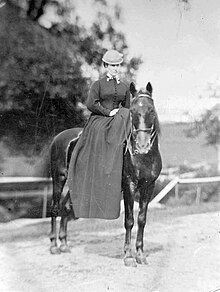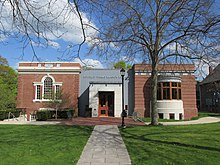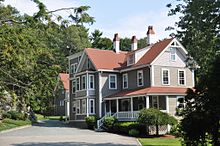Beverly Farms
This article needs additional citations for verification. (February 2019) |
This article's tone or style may not reflect the encyclopedic tone used on Wikipedia. (February 2019) |
Beverly Farms | |
|---|---|
 Beverly Farms Fire Station on the 4th of July in 2006. | |
| Nickname: Farms | |
| Motto(s): "Filled with History and Tradition" | |
| Country | United States |
| State | Massachusetts |
| County | Essex |
| Neighborhood of | Beverly |
| Population | 7,929 |
| Time zone | UTC-5 (Eastern) |
| Zip Code | 01915 |
| Area code | 351 / 978 |
Beverly Farms is a neighborhood comprising the eastern part of the city of Beverly, Massachusetts. It is an oceanfront community with a population of about 3,500 which extends from the Manchester-by-the-Sea border to another section of Beverly known as Prides Crossing. This area is roughly bounded by Prince Street on the south[dubious ], Greenwood Ave on the north. and Manchester-by-the-Sea on the east. A more exact description is provided in the Massachusetts Acts of 1852 Chapter 157. This area is part of Massachusetts's North Shore region, about 20 miles north of Boston.
History
Beverly Farms and the adjacent Prides Crossing were originally farming communities, much like the rest of Beverly. In the late eighteenth and early nineteenth centuries, wealthy residents of Boston, Philadelphia, Chicago, Washington D.C. and New York City built summer cottages along the seashore. These properties were the size and stature of those in Newport, Rhode Island, though only a few of the original mansions remain in the neighborhood today.
In 1887, Beverly Farms unsuccessfully petitioned the Massachusetts legislature for incorporation as a town.[1]
By the mid-twentieth century, Beverly Farms resembled a small town, somewhat secluded from the rest of Beverly and culturally interlinked with Prides Crossing. Working-class neighborhoods sprang up as support for the mansions became necessary. At this point, there was a wide financial gap between the wealthy and the working class.
Beverly Hills, California, was named in 1907 after Beverly Farms, which was a vacation spot of then-President Taft.[2]

Government and business
The community is served by three churches: St. John's Episcopal Church, whose altarpiece was sculpted by artist Hildreth Meiere, North Shore Baptist Community Church and St. Margaret of Scotland Catholic Church designed by architect William Ralph Emerson. Among other public buildings are a community center, a fire station, a railroad station on the MBTA Commuter Rail, and a recently expanded branch of the Beverly Public Library.

Lifestyle
Life in Beverly Farms is slow-paced in the winter but becomes increasingly active when the warm weather arrives. The summer has many activities for people to enjoy. Many of those activities are based at the local community beach, West Beach: this is a private beach, owned by the residents of Beverly Farms and Prides Crossing; current and former residents of the areas are entitled to beach permits, allowing access to West Beach (non-residents must apply for an access permit; their wait typically is six to ten years, because of the limited size of the facility).[3]
Beverly Farms is busiest at the Fourth of July holiday. A private organization of residents annually raises upwards of $60,000 through fundraisers to enable a weekend-long agenda of activities, including community dances, children's events, softball games, and the well-known "Horrible's" parade.[4] Celebration of the holiday culminates with fireworks at West Beach above a crowd that averages about ten thousand.

Notable residents
- Catherine Eddy Beveridge, socialite
- Oliver Wendell Holmes, Jr., associate justice of the Supreme Court of the United States
- Levi Leiter, retailer and founder of Marshall Field & Company
- Alice Bolam Preston, illustrator
- Robert Seamans, aerospace engineer and 9th Secretary of the Air Force
- Benjamin Thomas, congressman and associate justice of the Massachusetts Supreme Judicial Court
- John Updike, novelist hailed as "one of the great American writers of the 20th century"
- Chris Van Allsburg, author
- Bradford Torrey, ornithologist
References
- ^ Opening argument of Fred H. Williams, testimony, and closing argument of Hon. George M. Stearns, before the Legislative Committee on Towns, 1887, in favor of the incorporation of the town of Beverly Farms. Boston: Rand Avery Co. 1887.
- ^ Bright, William; Erwin G. Gudde (1998). 1500 California Place Names: Their Origin and Meaning. University of California Press. p. 23. ISBN 0-520-21271-1.
- ^ "West Beach", beverlyfarms.org
- ^ Fourth of July Celebrations - Beverly Farms website

